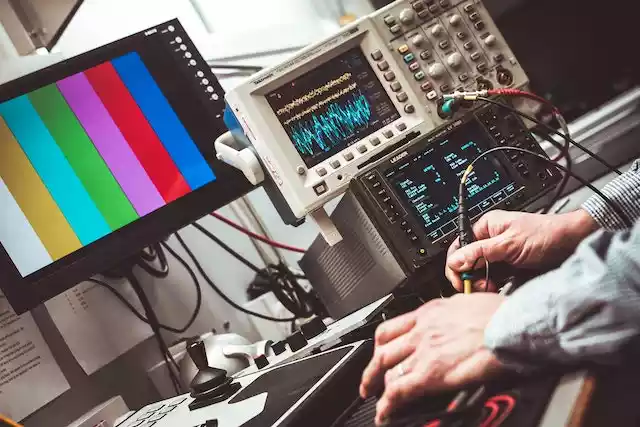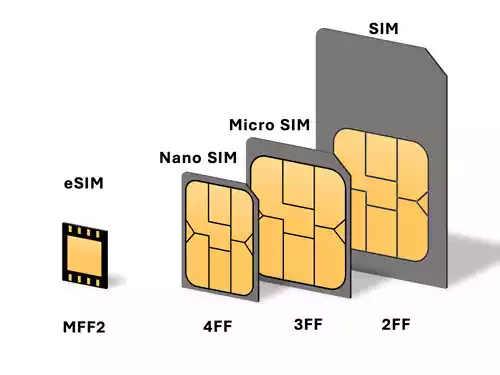LASER and its Characteristics

Table of Contents
What is a LASER?
A laser, which stands for Light Amplification by Stimulated Emission of Radiation, is a device that emits a powerful, monochromatic (single color or wavelength) and collimated (focused) beam of light.
Characteristics of Lasers
There are four main characteristics or features of lasers:
1. Coherence
Unlike regular light sources like light bulbs, which emit light waves with different wavelengths and directions, lasers produce light waves that are in phase (same wavelength, phase, and direction).
This coherence allows the beam to be focused very tightly and travel long distances without spreading.
2. Directionality
Lasers produce a very narrow beam of light, unlike the diverging light from a flashlight. This is because the light waves travel in the same direction.
Ordinary light sources, like mercury vapor lamps, spread in all directions, while a laser beam only spreads by a small amount even over long distances.
This makes lasers ideal for precise applications.
3. Monochromatic
Most lasers emit light of a single wavelength (color), resulting in a pure, concentrated beam.
Unlike ordinary light that emits a spectrum of wavelengths, the laser’s single wavelength offers several advantages.
4. High Intensity
Due to their high directionality, lasers can concentrate a lot of light energy into a small area, making them powerful for cutting, welding, and other applications.
Types of LASER
Different types of lasers exist, each with different properties and applications. Some common types include:
1. Gas Lasers
Gas lasers utilize gases such as helium, neon, or carbon dioxide as the active medium to produce laser light.
Each type of gas laser exhibits unique properties and finds applications in diverse fields, ranging from scientific research to industrial manufacturing.
2. Solid-State Lasers
Solid-state lasers employ solid materials such as crystals or glasses as the active medium.
These lasers offer superior performance in terms of efficiency, reliability, and beam quality, making them suitable for precision applications in medicine, telecommunications, and defense.
3. Diode Lasers
Diode lasers rely on semiconductor materials to generate laser light.
They are widely used in consumer electronics, telecommunications, and medical devices due to their compact size, efficiency, and affordability.
Applications/How Lasers Are Used
Here are some examples of how lasers are used due to their unique characteristics:
1. In Medicine
Lasers are utilized for precise surgical procedures, diagnostics, and therapeutic treatments. Examples include LASIK eye surgery, blood analysis, and laser hair removal.
2. In Industry
Lasers play a crucial role in cutting, welding, marking, and drilling materials with exceptional precision and efficiency. Industries such as automotive, aerospace, and electronics rely on laser technology for manufacturing processes.
3. In Communication
Lasers are instrumental in transmitting data through fiber optic cables, enabling high-speed communication networks. Additionally, lasers are used in reading CDs, DVDs, and barcode scanners.
4. In Scientific Research
Lasers are indispensable tools for conducting experiments, spectroscopic analysis, and precise measurements in various scientific disciplines.
Wrap Up
The characteristics of lasers, including coherence, directionality, monochromatic nature, and high intensity, make them invaluable in numerous fields ranging from medicine and industry to communication and research.
As technology continues to advance, the versatility and effectiveness of lasers are likely to expand further, driving innovation and progress across various sectors.
FAQs
1. How do lasers differ from conventional light sources?
Lasers differ from conventional light sources in terms of coherence, directionality, monochromatic nature, and intensity.
Unlike conventional light, laser light is highly focused, pure in color, and capable of concentrating significant energy into a small area.
2. What are some common applications of lasers in medicine?
Lasers find various applications in medicine, including surgical procedures (e.g., LASIK eye surgery), diagnostics (e.g., blood analysis), and therapeutic treatments (e.g., laser hair removal and skin rejuvenation).
3. Are all lasers the same?
No, there are different types of lasers, such as gas lasers, solid-state lasers, and diode lasers, each with unique properties and applications.
4. How do lasers contribute to industrial processes?
Lasers are utilized in industrial processes for cutting, welding, marking, and drilling materials with precision and efficiency, thereby enhancing productivity and quality control.
5. What role do lasers play in communication technology?
Lasers play a critical role in transmitting data through fiber optic cables, enabling high-speed communication networks. Additionally, lasers are used in reading optical storage media such as CDs and DVDs.





